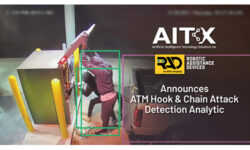Is Cloud Access Control in Your Clients’ Forecast?
Timing may be right to pitch cloud-based access control.

Historically, traditional access control systems have all the software and hardware components located on the customer’s premises. This approach has served the market well, but it can be a burden to the customer to maintain. Keeping the system current with software updates and patches or launching a full upgrade when the current version has reached the end of its life can be time-consuming and risky. Add this to the cost for annual soft-ware support agreements to maintain complex databases, and the expenses involved can grow significantly. Timing might be right to discuss with clients a hosted or cloud-based access control system.
In the simplest terms, a hosted access control system is one that only requires door control hardware to be located at the customer’s site. All of the software and database requirements are housed within a third-party provider, relieving the customer from having to manage software updates and server refresh cycles. Instead, customers can remotely access and manage their system from any typical Internet connection.
Systems Offer Familiar Features, Strong Support
Determining whether or not this is the right solution for clients depends on several factors. If a customer needs a system that spans a campus with thousands of doors and complex programming, then a hosted solution may not be the most effective. However, hosted systems can offer benefits and features of larger systems without all the upfront costs. Many can provide the most-used aspects of access control, such as integration into video, high security access cards, multiple factor authentication and others.
RELATED: Determining the True Definition of Cloud-Based Access Control
Having the server for the access control managed and maintained by an outside provider eliminates the need to purchase expensive infrastructure at the outset, and the cost of infrastructure is being shared across multiple sites or customers. This shared expense reduces the cost to the customer, providing a fixed-cost ownership. Additionally, these servers will be housed in secure datacenters with industry-recognized certifications for redundancy and fault tolerance.
Quality support also provides substantial savings. The outsourced provider is required to manage and maintain the remote infrastructure for the customer. The provider takes care of the day-to-day database maintenance, patches and upgrades to the system, and will also have specialized resources to do this – resources that would be very costly or unaffordable to a small- or medium-sized business. Having dedicated resources means less downtime and faster resolutions when problems arise. Many providers also have dedicated help lines and online FAQs.
Communications Risk, Budget May Be Barriers
The greatest risk lies with the communication link between the site and the server, which requires a secure, dedicated network connection from the site to the datacenter where the server is located. Setting up a VPN tunnel will ensure a secure path of communication and should be engineered and deployed by IT professionals. If the site loses complete connectivity, the local access hardware will continue to operate in degraded mode, meaning it will only function with its last known programming until the communications are restored. While communications are down, customers will not be able to receive alarms or make changes to the programming. If there are global commands in place, these will not work with remote sites unable to receive the signal. Incorporating a cellular backup would ensure the system stays up and running, albeit slower.
Your customer’s decision will require a business needs analysis, which in some cases will be obvious based on local user requirements. Start by determining what types of features are needed. If a large system with redundant servers and replication across a large company is required, then a hosted system may not be the best choice. But if the business has many smaller locations, or even just a single location, then a hosted solution might be appropriate.
Next, analyze your customer’s budget. How difficult is it to obtain capital expenditure dollars versus operational expenditure funding? Since this is a hosted system, there is a recurring monthly cost; however, it is generally easier for customers to justify operational expenses than to have funding approved for capital projects. Lastly, review the total cost of ownership versus having the system hosted. While there is always a point that the recurring cost will exceed the cost to purchase, having reduced upfront costs and the ability to offload the maintenance and support of the system can be a huge benefit, providing intangible savings over a long-term period.
If you enjoyed this article and want to receive more valuable industry content like this, click here to sign up for our FREE digital newsletters!

Security Is Our Business, Too
For professionals who recommend, buy and install all types of electronic security equipment, a free subscription to Commercial Integrator + Security Sales & Integration is like having a consultant on call. You’ll find an ideal balance of technology and business coverage, with installation tips and techniques for products and updates on how to add to your bottom line.
A FREE subscription to the top resource for security and integration industry will prove to be invaluable.








